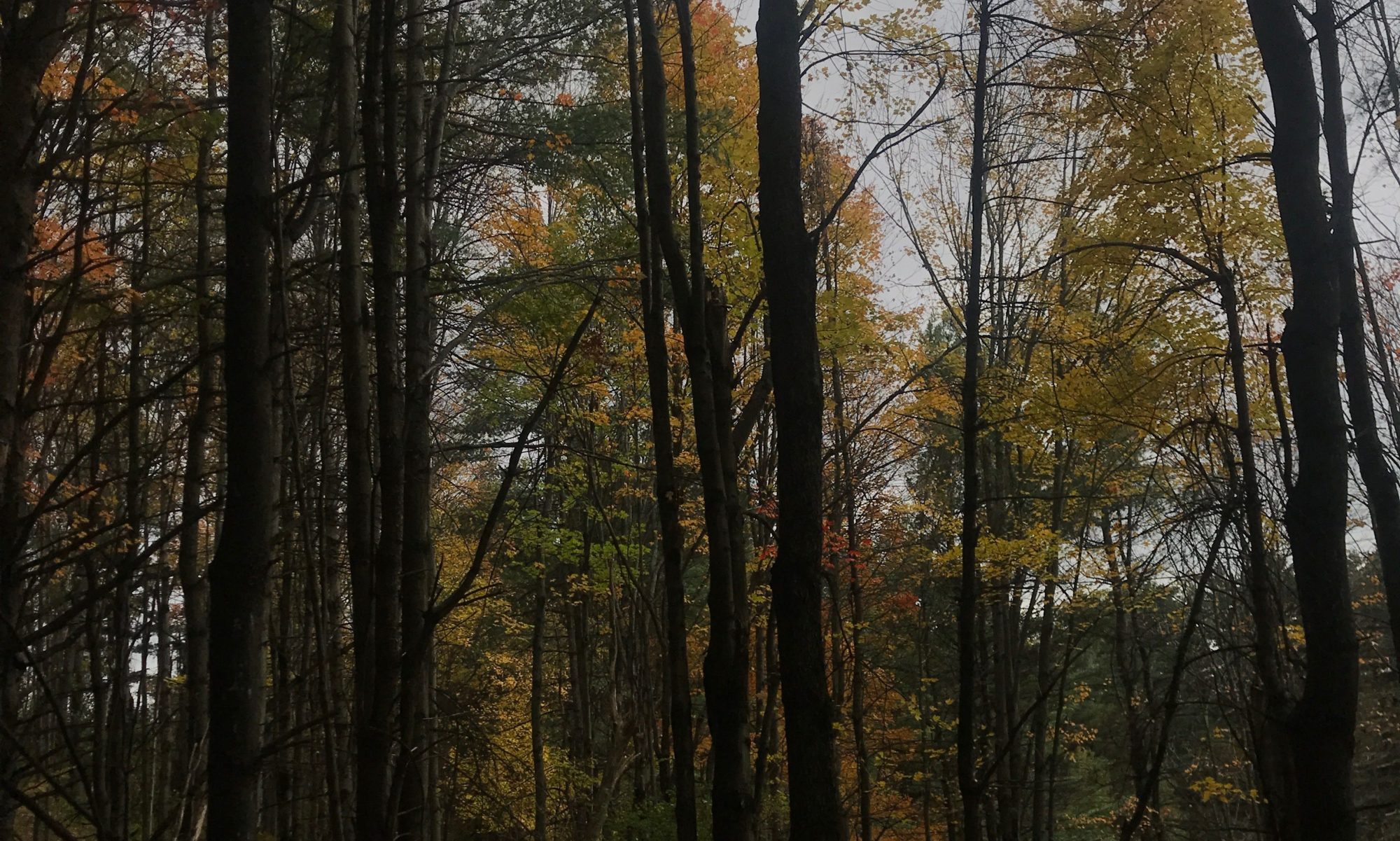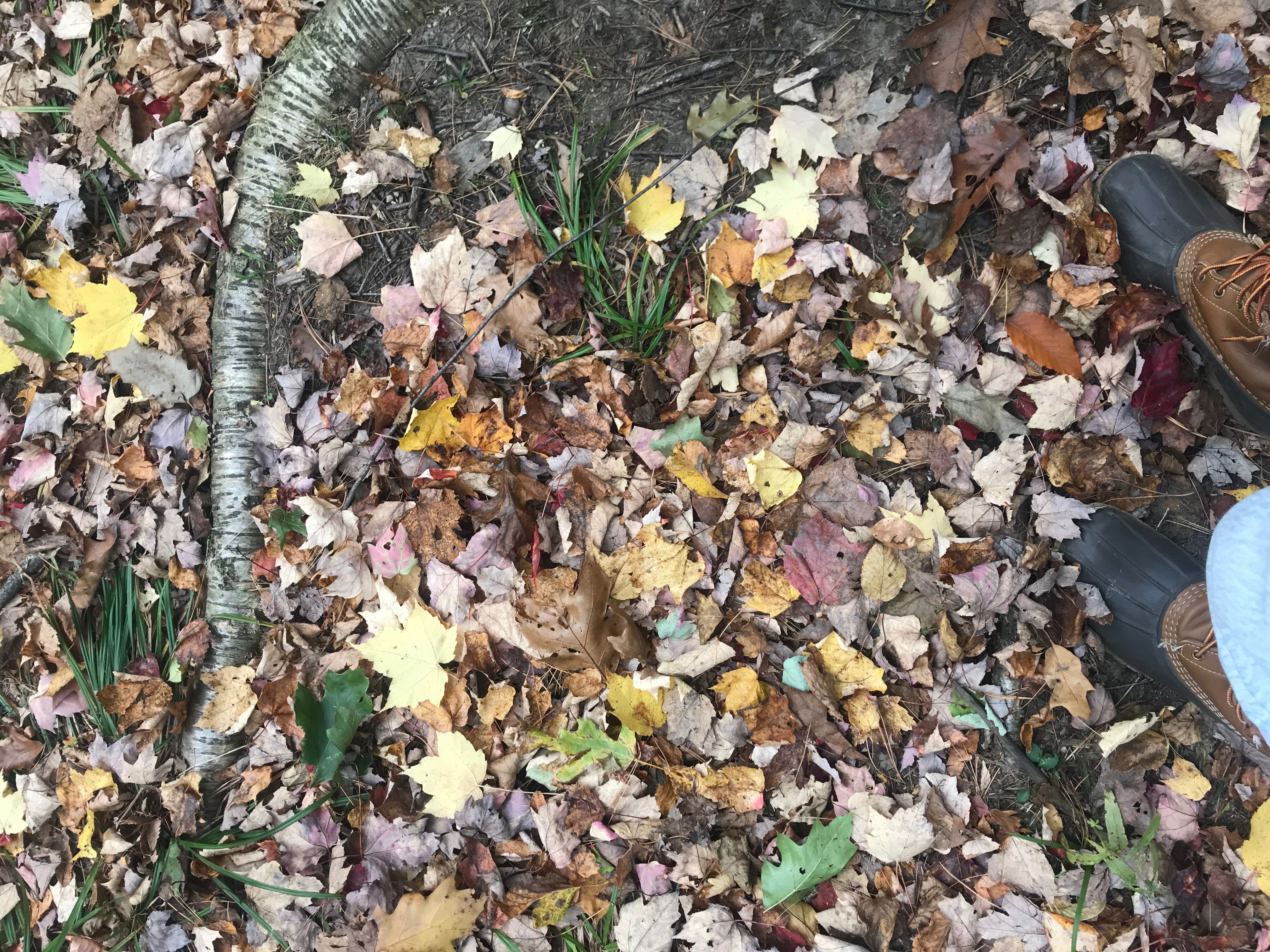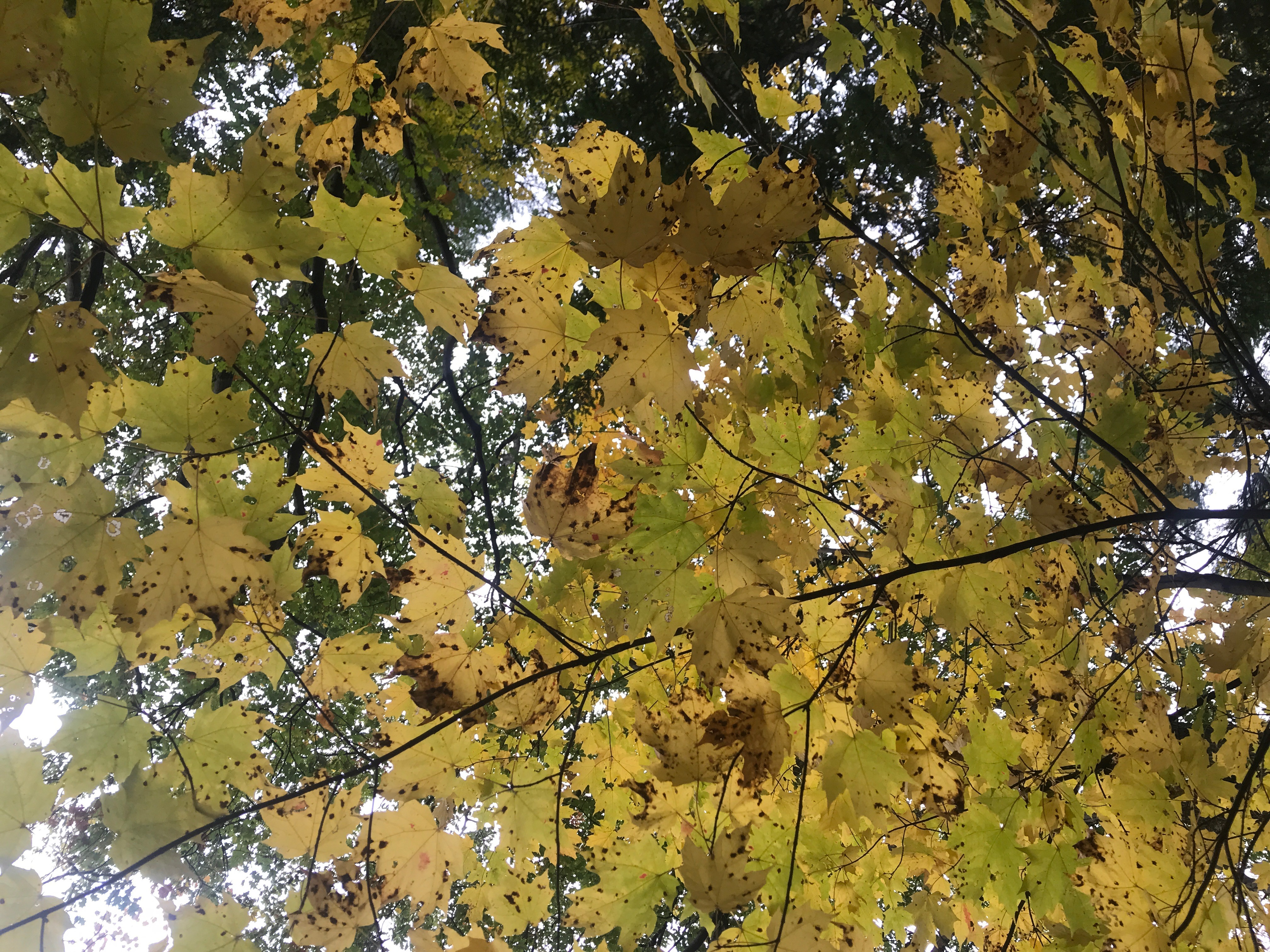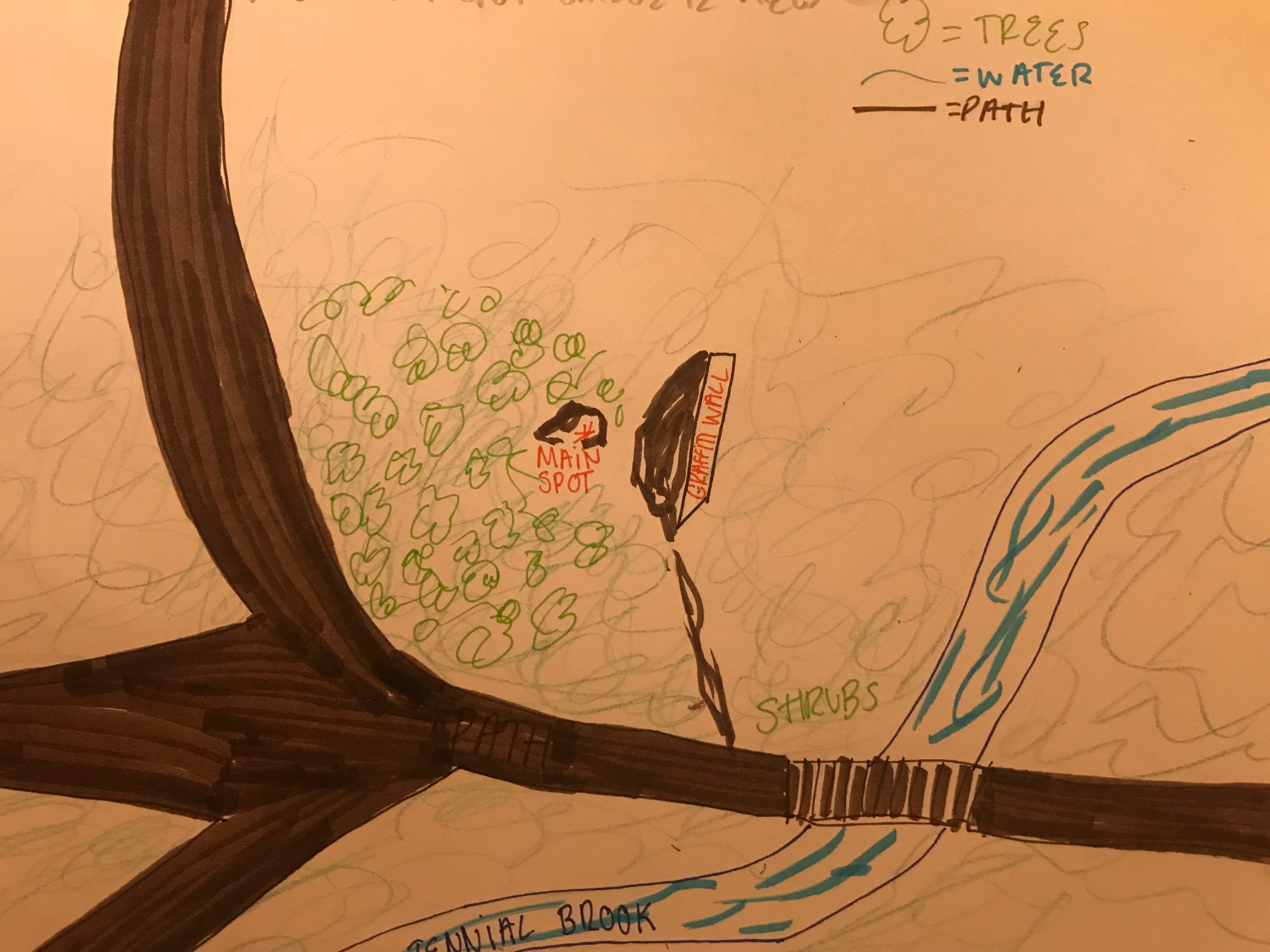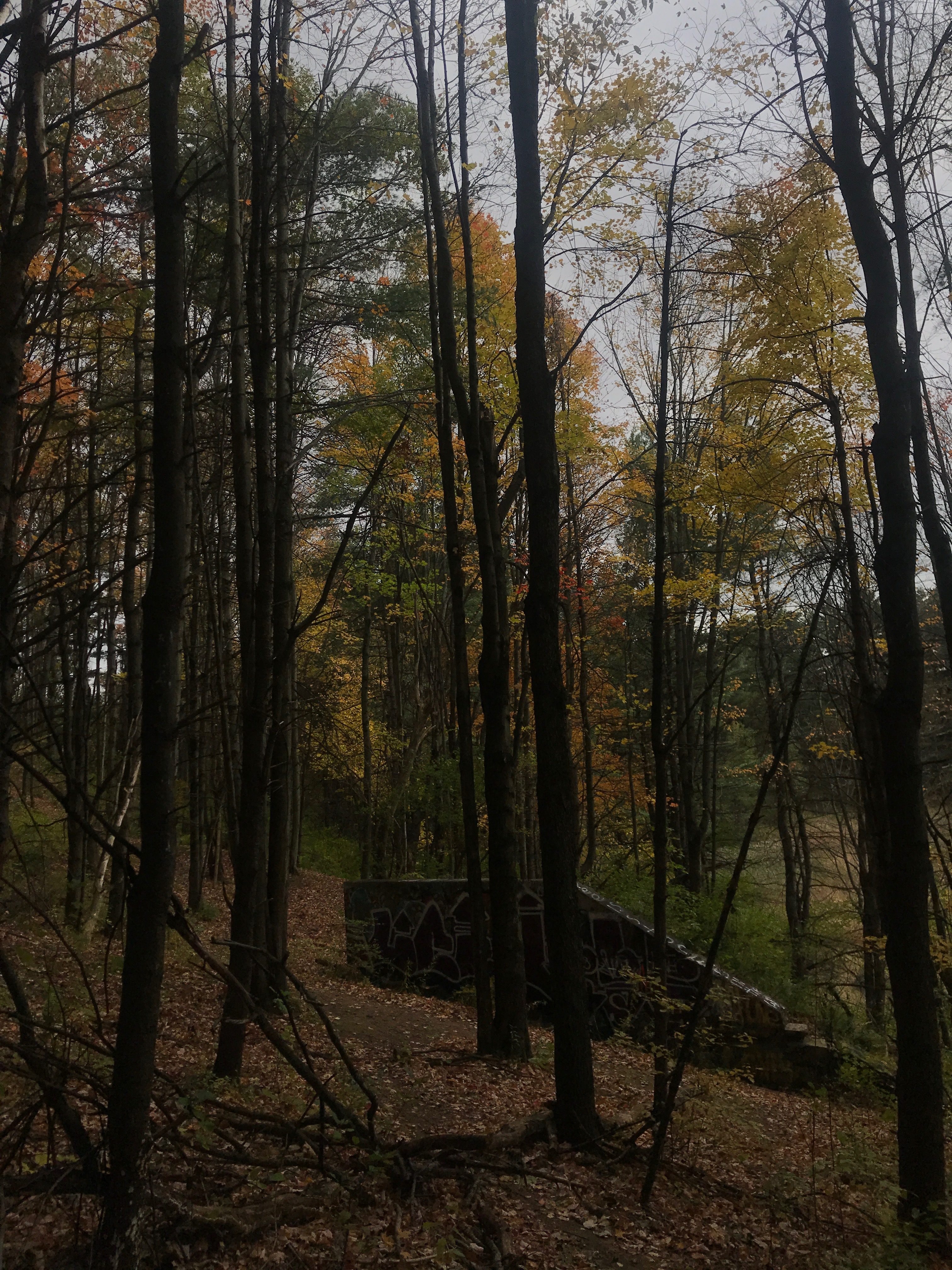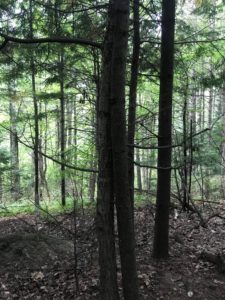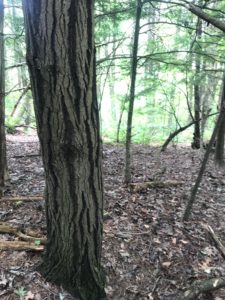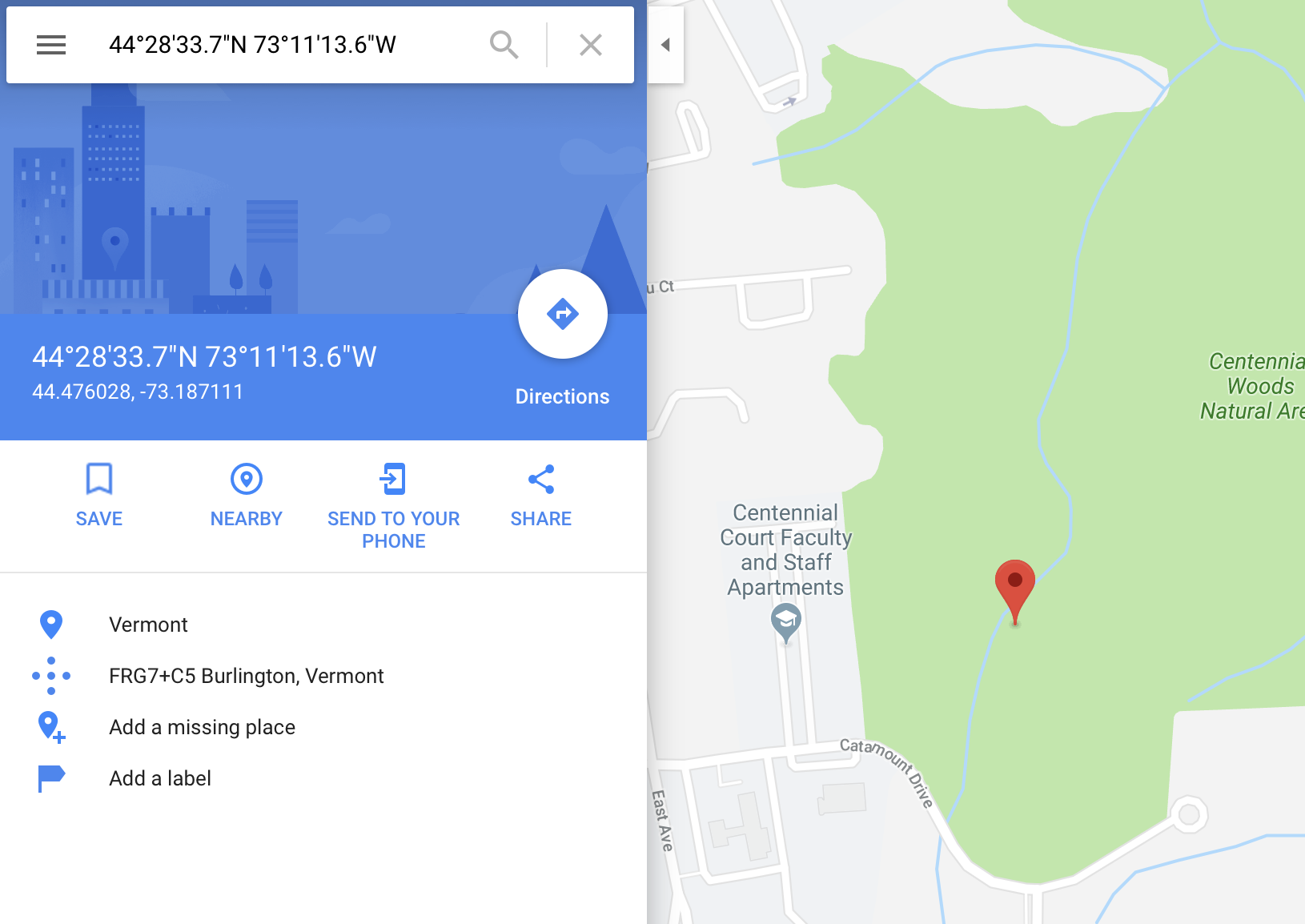Today I visited my phenology spot for a third time. It was beautiful weather, about 50 degrees and sunny at 12 pm on November 4, 2018. I was joined on my journey by a vistor today and we observed the trees continuing to change color and the leave coverage of the ground increased. Many other trees, like the yellow birch, have lost all their leaves. The massive amount of leaf loss this season has coated the ground in leaves and therefore making the O level of the soil very rich with material. The nutrients and iron from the decomposition of the leaves will over time increase the iron levels in the lower levels into the sublevels to create nutrients for the new generation of trees to grow in the soil. 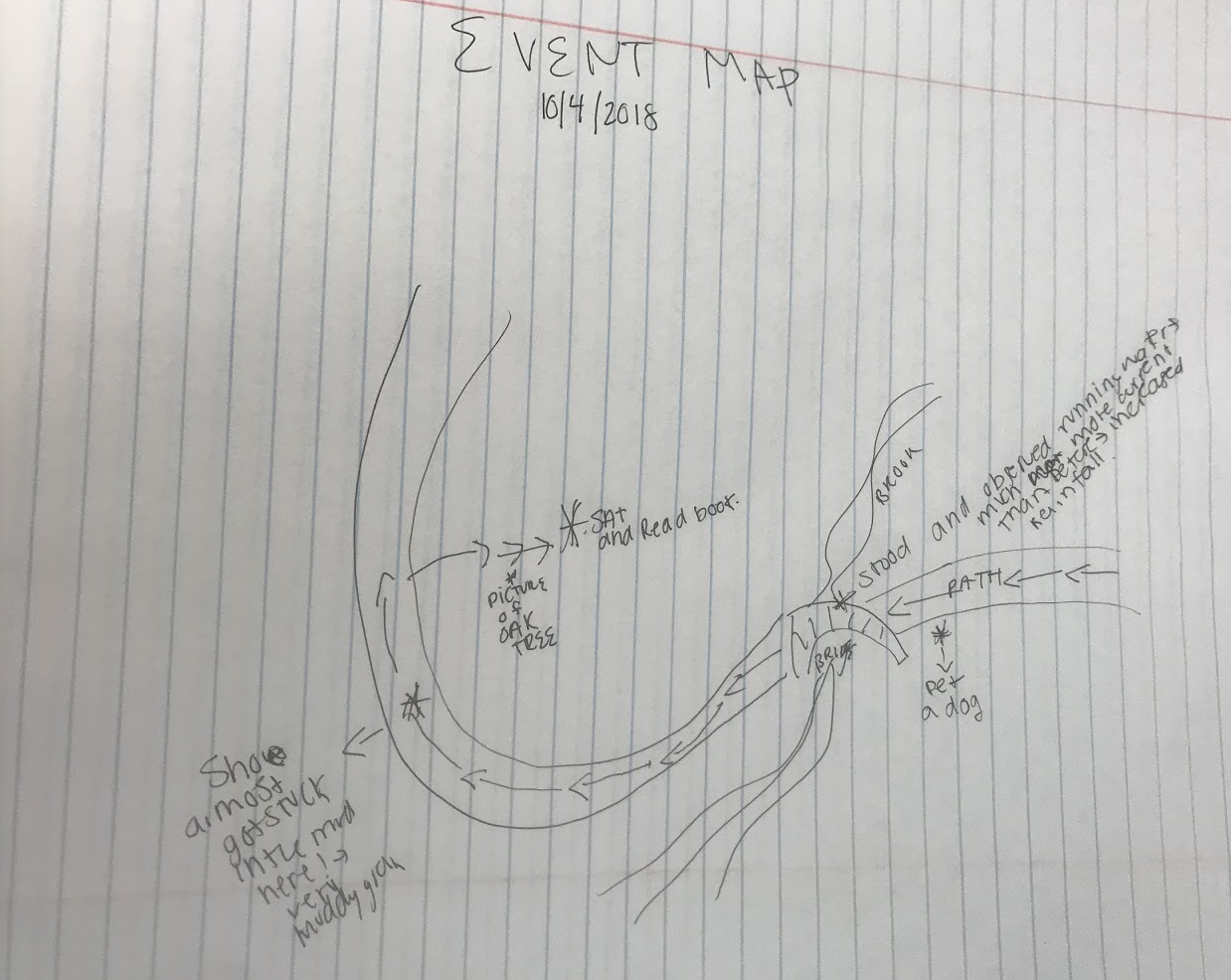
For example, this oak tree still has some leaves, but they have changed color and are now a dark orange brown color:

